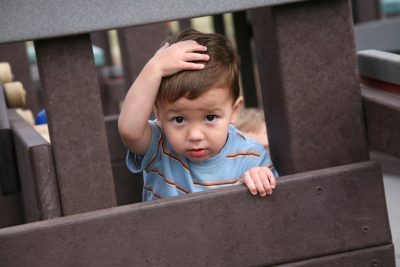As our kids head back-to-school, they also head back into close contact with other kids. This means an increase in exposure to infections, including lice. No one wants their kid to get head lice, and we DEFINITELY don’t want them bringing it home to their parents and siblings. What can we do as parents to prevent head lice, and if our child is unfortunate enough to get head lice, what treatment options are there?
What are head lice?
Head lice (singular: louse) are tiny bugs the size of a sesame seed. They are typically pale grey but can be any color. They feed on small amounts of blood from the scalp and cannot survive for more than one day without a blood meal. Head lice live for 28 days, and their life cycle has three phases: egg or nit (hatches within 7-12 days), Nymph (looks like an adult louse but is smaller—about the size of a pinhead), and adult louse. A female louse can lay up to 10 eggs per day. Lice lay their eggs close to the scalp, and the eggs are oval and about the size of a knot of thread. They hold onto the hair surface with a sticky substance. Eggs can blend in with hair color and be confused for dandruff or hairspray.
A common thought is that lice are found in heads/hair that are dirty, but in fact, lice can equally infect hair that is clean or dirty. Lice are found worldwide in all parts of the country and cities. No type of person is more likely to get head lice. And lice are very common in school-aged children. Each year, millions of children get head lice.
How do head lice spread?
Lice do not jump, hop, or fly; they only crawl. The most common way they spread is from close, prolonged, head-to-head contact. There is a very small chance they will spread by sharing objects such as combs, brushes, hats, and sports helmets.
What are head lice symptoms?
The most common symptom of head lice is itching on the scalp. However, it may take 4-6 weeks after lice are on the scalp for itching to start. Most itching happens behind the ears and at the back of the neck. The itching may continue even after the lice are gone.
How do we check our children for head lice?
Regular checks are good to spot lice before they multiply into large numbers. To check, seat your child in a brightly lit room and part their hair. Look for crawling lice and nits on the scalp one section at a time. Live lice are hard to find because they avoid light and move quickly. Nits look like small yellow or brown specks and firmly attach to the hair near the scalp. The easiest place to find them is at the hairline near the back of the neck or ears. Nits will be firmly attached to hair, while dandruff is not. Use a fine-toothed comb such as a lice or nit comb to comb through each section.
What do you do if your child has head lice?
First, talk to your child’s doctor before starting any treatment for head lice. And DO NOT try any home remedies such as gasoline or kerosene. Other home remedies such as olive oil, mayonnaise, margarine, or essential oils have also been shown to be ineffective. Effective lice medications are on the market; however, speak to your child’s doctor before starting these. They include 1% Permethrin lotion, Pyrethrin shampoo, and Ivermectin lotion, all available without a prescription. These kill lice but not the eggs so you may need to use them multiple times.
Also available with a prescription is Malathion lotion, which kills lice and eggs. It also may require multiple applications. It is only approved for children six years and older, has a strong odor, and is flammable. Also available with a prescription is Spinosad topical suspension, which is approved for children six months and older and kills lice and lice eggs. Ivermectin tablets are also available with a prescription, but you should only use them when other treatments have failed.
If your child has head lice, you should wash their clothes and linens in hot water while treating them and check other household contacts for head lice. Also important to note is that the American Academy of Pediatrics and the National Association of School Nurses do not support “no nit” policies at schools, stating that children with nits are not allowed back in school. If your child’s school enforces this, you may want to speak to your child’s pediatrician.
Hopefully, all of our children will have a lice-free school year! But if lice do enter your home, we have ways to help! Looking for more back-to-school tips? Check out our recent articles on annual and sports physicals, as well as a look into whether or not you should consider a heart screen for your teenage athlete.
Need help finding a pediatrician? We are here to help! Learn more about what factors to consider when choosing a pediatrician.






Comments